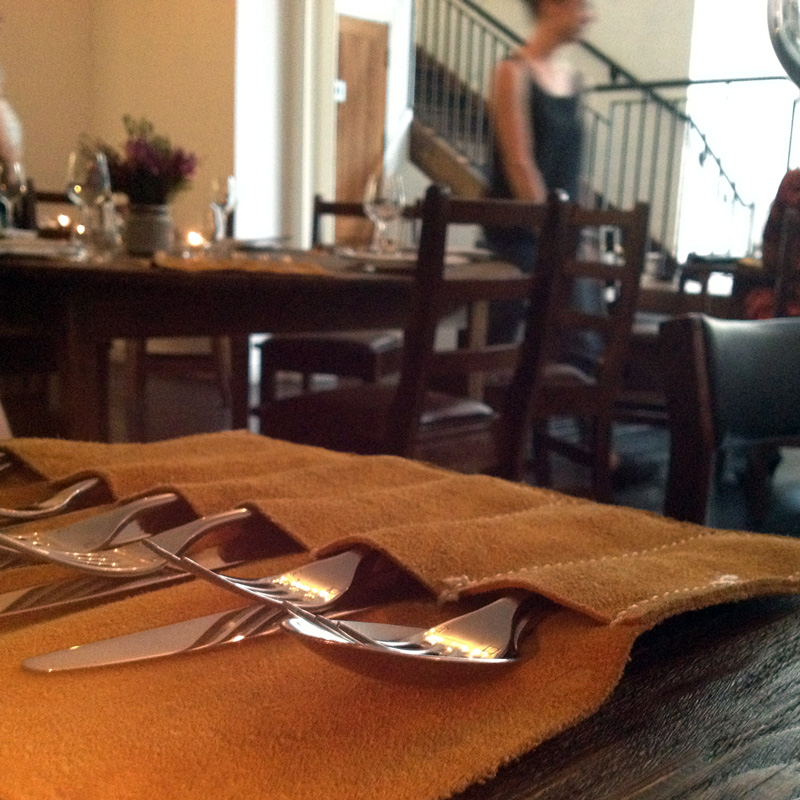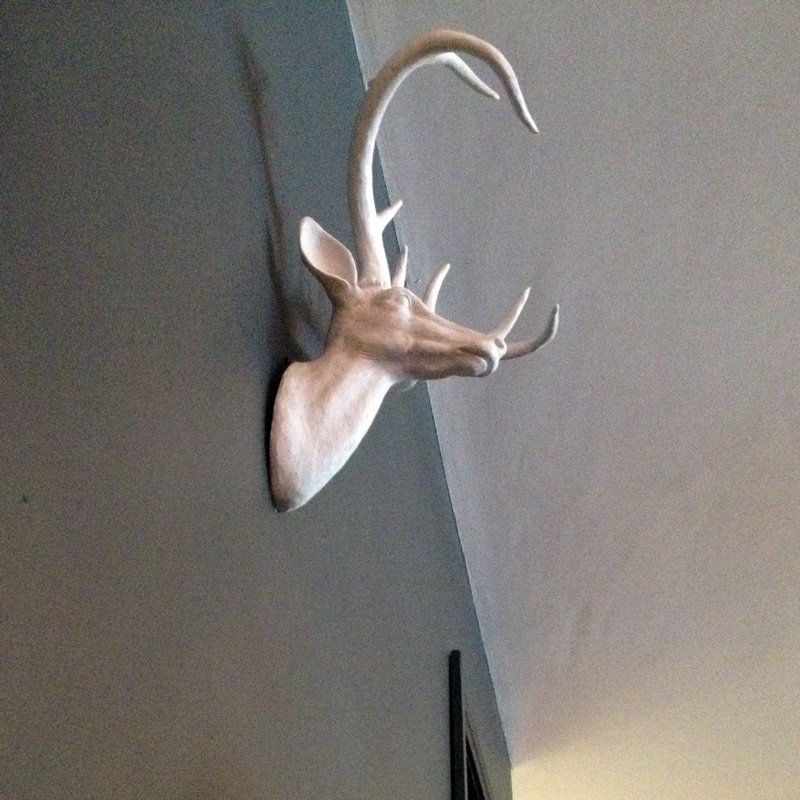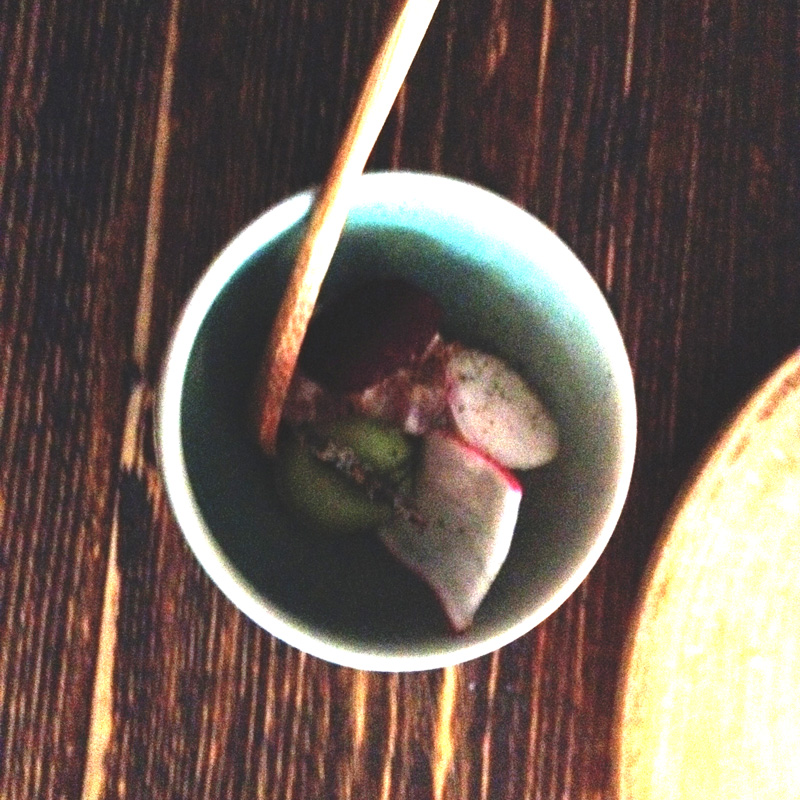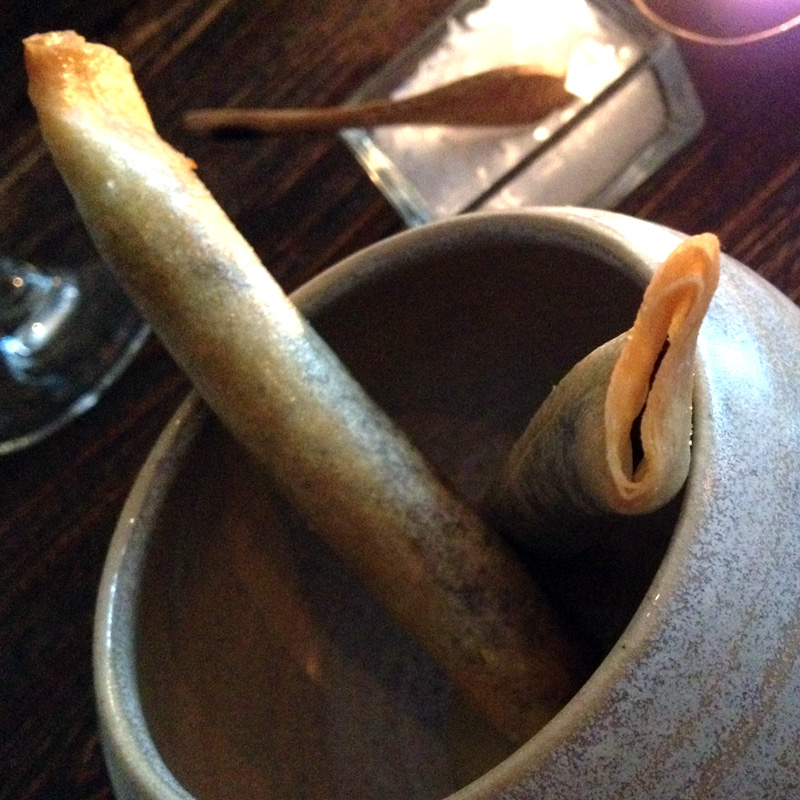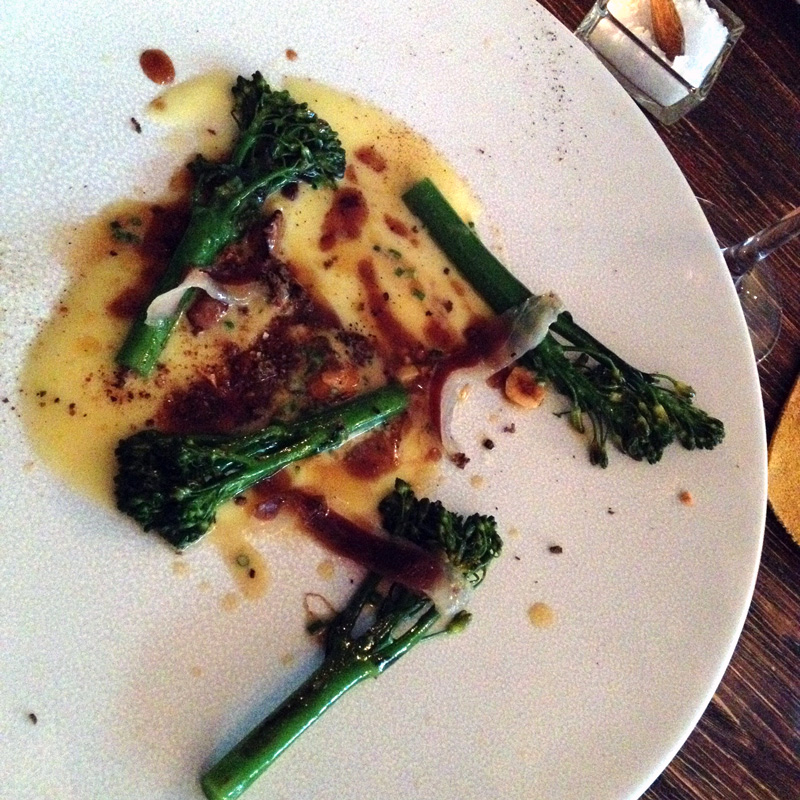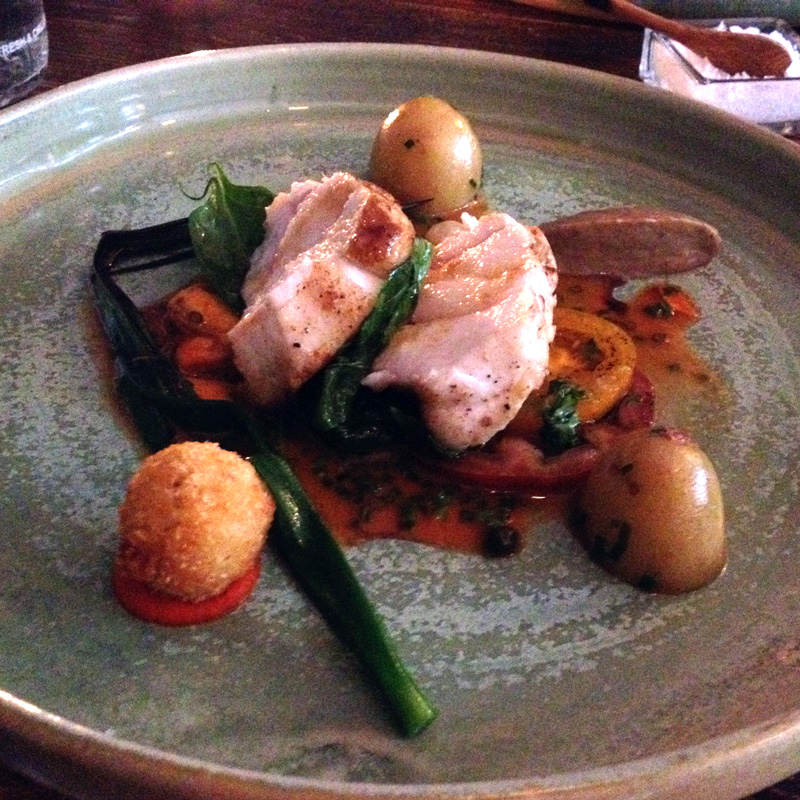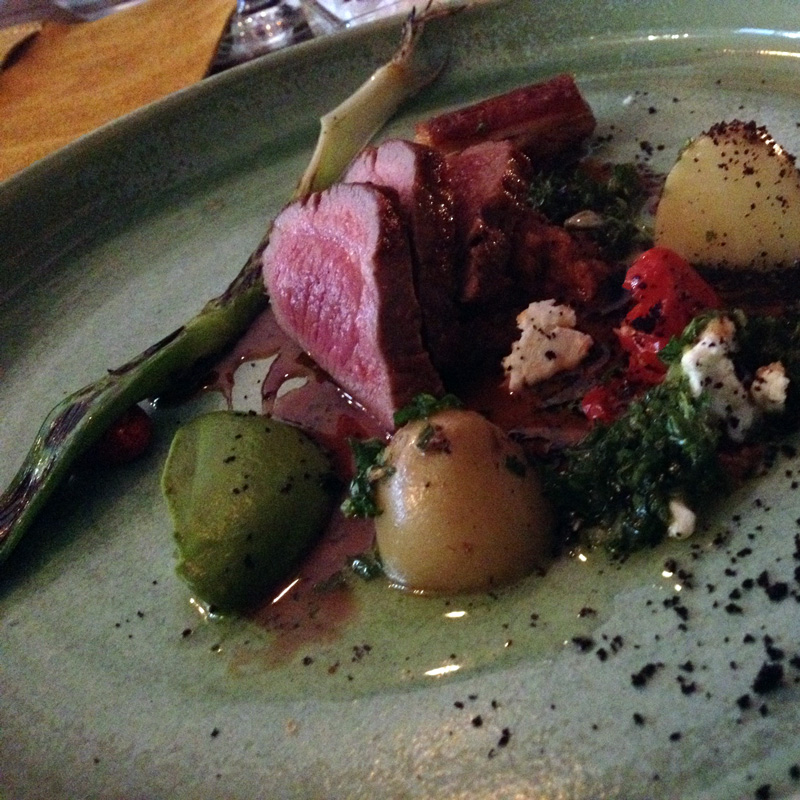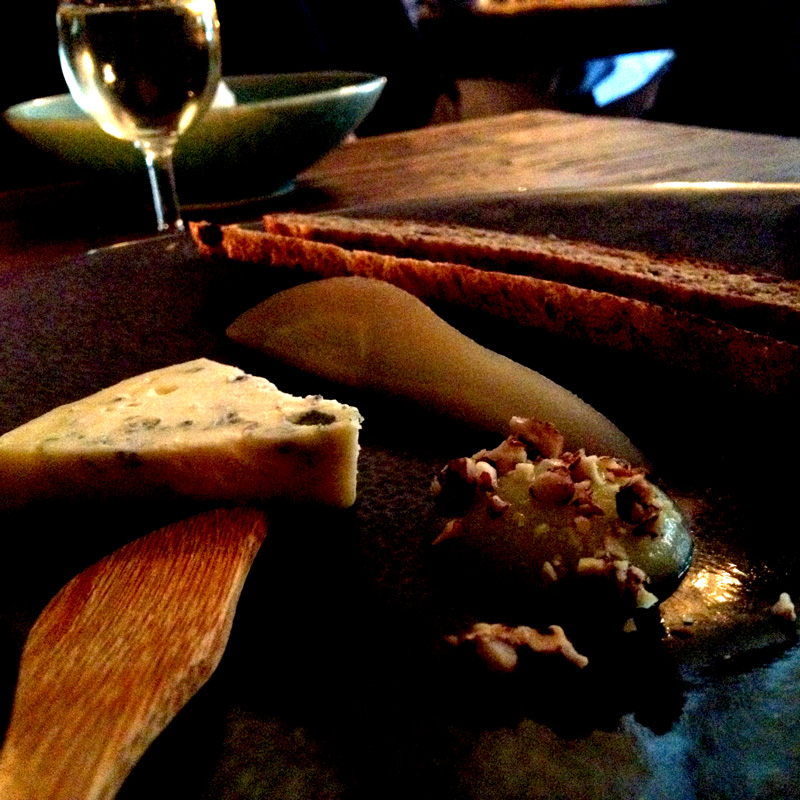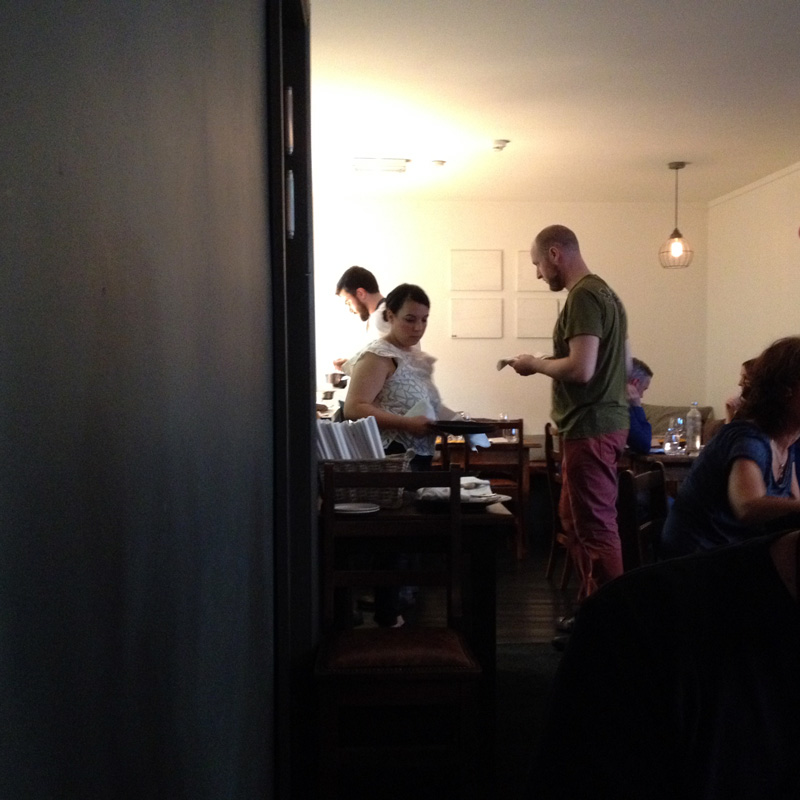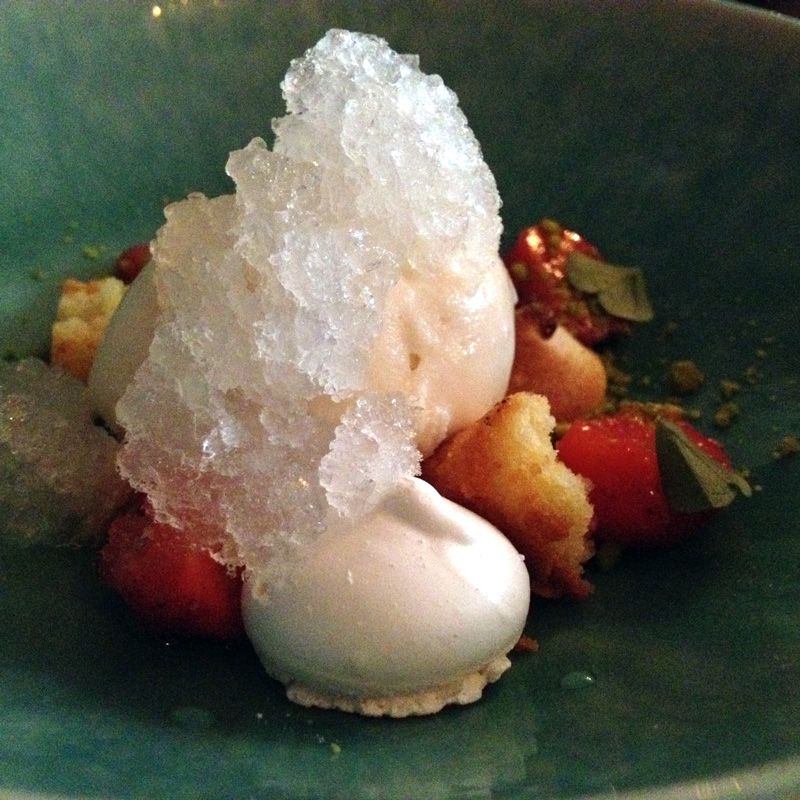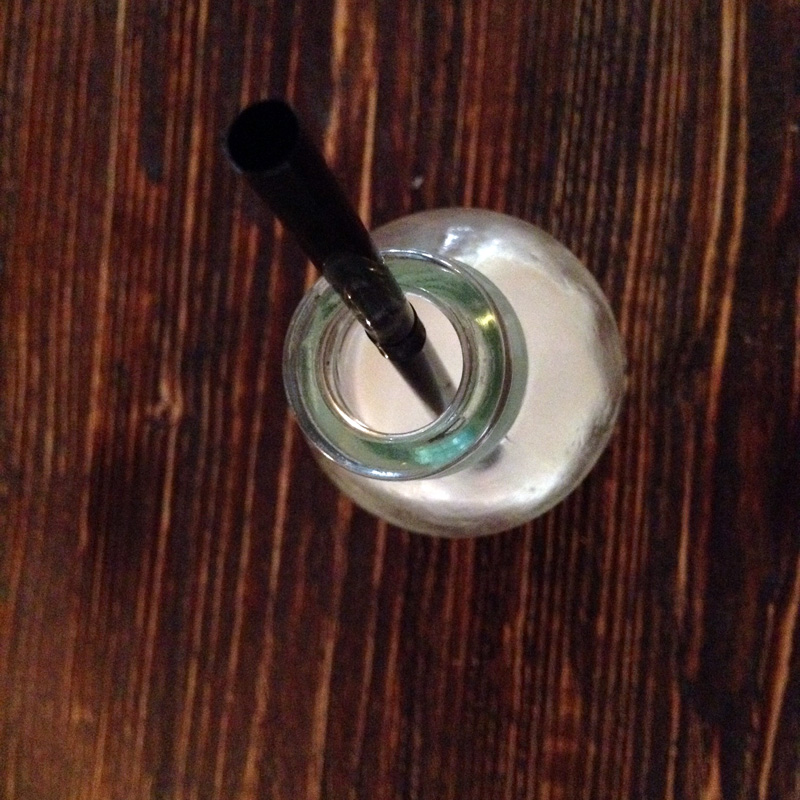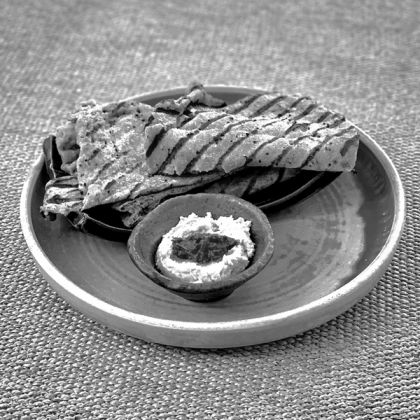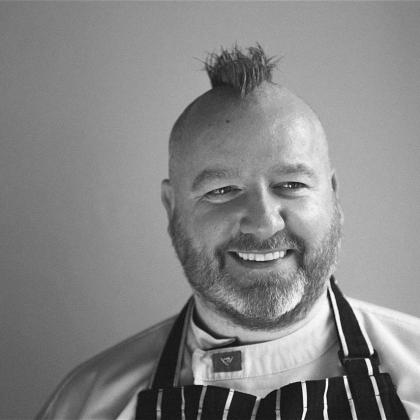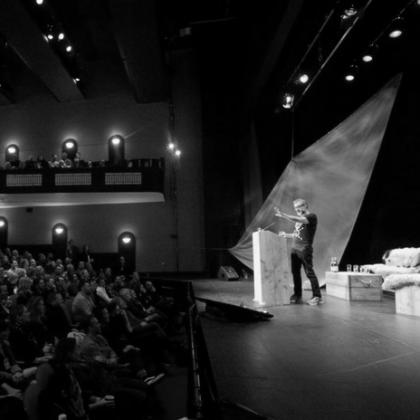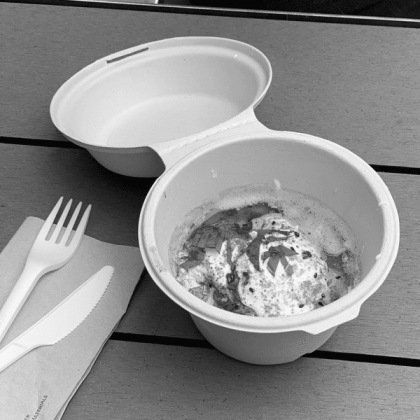John and Sandy Wyer ran out of money when they were doing up Forest Avenue. Phew! Imagine if they had run out of ideas. Because ideas are what John and Sandy trade in, and their limited budget has given them a performance space in which to work imaginative tropes on classic culinary ideas, a space to write riffs on what a lamb dish should be, riffs on what potato bread should look and taste like like, riffs on how you should serve a cheese plate, or compose a wine list.
All around you in Forest Avenue are hard-won, creative ideas, hung on a hangar of modest means. It's a prototype for every restaurant – what counts is imagination, because we are here to feast on creativity. We're not here to eat a deep pile carpet.
To show their creative self-awareness, they throw you a clue in the bathroom. One wall has a series of small, empty frames hung top to bottom. The empty frames are a perfect metaphor - Forest Avenue is here to occupy the frame, to brace the canvas, and to then give you a pointillistic portrait of modern Irish food, painted and erased and painted again by their patient efforts.
Most of all, it has given them a space where they have rethought and reworked how a restaurant serves food to its customers.And this is the big enchilada: Forest Avenue works in a way that is quite different from the Irish restaurant norm.Irish restaurants send out plates according to order, so the couple on table 12 are getting their main courses five minutes after their starters have been collected, whilst table 8 is just sitting down with the wine list and table 2 is settling the bill.
FA doesn't do that. In FA, the food is sent out to a series of tables when the food is ready. John and Sandy have switched the functionality of a restaurant from one of repetition and sequence, based on the menu and timing and ordering, to one where the kitchen and the tables are partners in a performance.
Forest Avenue is a place for Food Performance.The performance works like this. A series of tables are booked at 6pm, others at 8pm. A private party may be upstairs, arriving at seven. For the 6pm crowd, the food comes at the same time – breads, then a terrific series of little dishes, then the first two courses, then the main course, chosen from only a pair of choices – monkfish, or lamb? The only other choice is pudding: macerated strawberries, or Cashel Blue cheese?
As the food comes out, it goes to all the tables at the same time. I'm having crab, gazpacho, whipped ricotta, pine nuts and melon. And so are you.
I'm having Cashel Blue with candied pecans, pear and bread with prune and Szechuan pepper. And so are you.
This is a hugely important part of Forest Avenue, because it allows the team to operate at a maximum of inventiveness, but also a maximum of spontaneity. Yes, the plates are worked on as the ingredients are assembled, but they are worked on quickly and contemporaneously, as a troupe of chefs plate and decorate in choreographed precision. Speed is of the essence. This means the food is fresh and alive, and not tortured. The bane of modern Irish restaurant food is a plate where every ingredient has been worked on and worked out, winding up with food that tastes tortured.
Forest Avenue, by contrast, knows that it don't mean a thing if it ain't got that swing, and this food swings. Take a dish of “Sprouting broccoli, truffle potato, hazelnuts and duck ham.” It reads simple, but on the plate it is an ode to savouryness. And then you realise that the only truly savoury element is the duck ham, and you've got about 10 grammes of that.
So, what makes for the excitement? The answer is the conjoining of ingredients that are plated at speed, allowing them to integrate with one another as the dish cools and as you eat it, and as that final slick of brown butter brings it all together. “Sprouting broccoli, truffle potato, hazelnuts and duck ham” becomes “green-starchy-savoury-crunchy-warm-tactile-sweet”. In the same way an amuse of “rocket granita with peas and ricotta” becomes “chlorophyll-dairy-cool-icy-soft-summer.”
This is Taste by Association, and it is a powerful thing.That's not to suggest that Forest Avenue is perfect. It isn't. The crab and gazpacho dish, for example, doesn't work – the temperature is wrong, there isn't enough contrast, and the crab meat is wan. It needs more chilli heat, it needs to be cooler – Mr Wyer seems wary of coolness – and it needs the sweetness and acidity of Irish summer tomatoes and just-cooked crab meat, and maybe the contrariness of a foraged ingredient.
But everything else pushes the associative buttons just the way Mr Wyer wants. The dishes have wonderful logic – salmon tartare with squid inky crispy bread; a black pudding cigar with apple and mustard; the prune in the bread with the pear and the Cashel Blue cheese; the little crab cake with monkfish. And the food eats as well as it possible to eat, because the focus is on getting each plate at its zenith, and then getting it to your table.It helps that the staff, led by Sandy Wyer, are really, really good, and it helps that that drinks list and the wine list are super-smart, and it helps that value for money is terrific.
But above all, Forest Avenue works because it is a space for cooking as performance, and that performance works because it is an interaction between kitchen and customer. Playing the role of customer has rarely been as much fun as this. I'm ready for my close-up.
John McKenna

